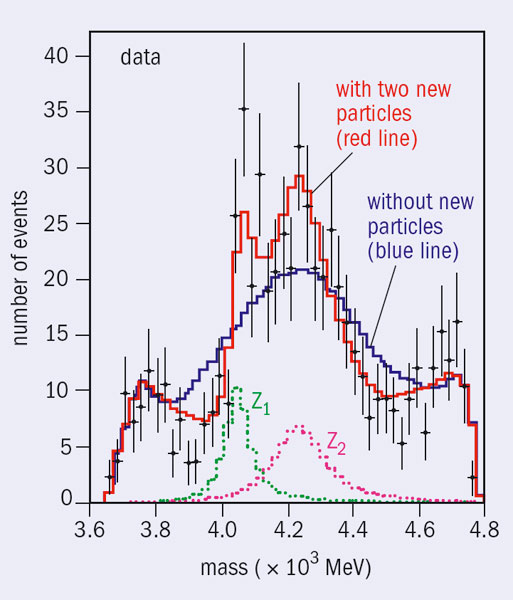The Belle collaboration has announced the discovery at the Japanese B-factory, KEKB, of three new exotic sub-atomic particles, which they have labelled the Z1, Z2 and Yb. The Z1 and Z2 states appear to be particles consisting of four quarks, while the Yb may be the first clear example of an exotic hybrid particle, containing an excited gluon in addition to a quark–antiquark pair.

In the past few years, a number of peculiar new particles, including the X(3872), Y(4260), X(3940) and Y(3940), have been found both at Belle and at the BaBar experiment at SLAC. Last year, the Belle team reported the first exotic particle containing a c and c quark with non-zero electric charge, the Z(4430) (CERN Courier May 2005 p7 and CERN Courier January/February 2008 p7).

The Belle collaboration has now found further new particle states in the decay products of B mesons produced at KEKB. The team searched for states decaying into a π and χc1, a well known charmonium meson, and found mass peaks at 4051 MeV and 4248 MeV (figure 1), which they have named the Z1 and Z2 respectively (Mizuk et al. 2008). Like the Z(4430), the states have non-zero electric charge and could be further examples of particles consisting of four quarks – a c and c bound together with a quark and different antiquark, as in cucd, for example.
The Yb state was found in a different way: in an energy scan of the KEKB accelerator where the Belle team observed a dramatic increase in the production rate of the upsilon together with two pions at an energy of 10,890 MeV (figure 2). This indicates the production of a new particle decaying into an upsilon and two pions. This could be the first example of an exotic bottomonium particle, consisting of a bound state of a b and b together with an excited gluon, although there are other possible interpretations.








